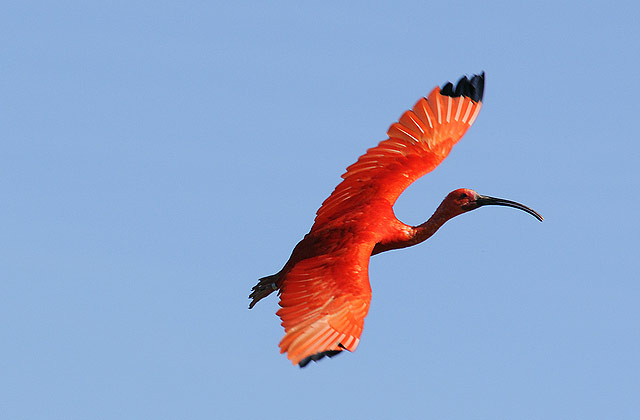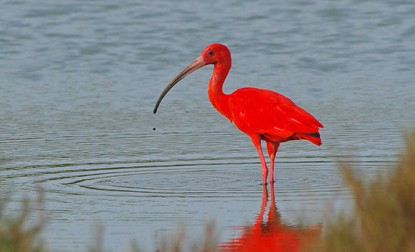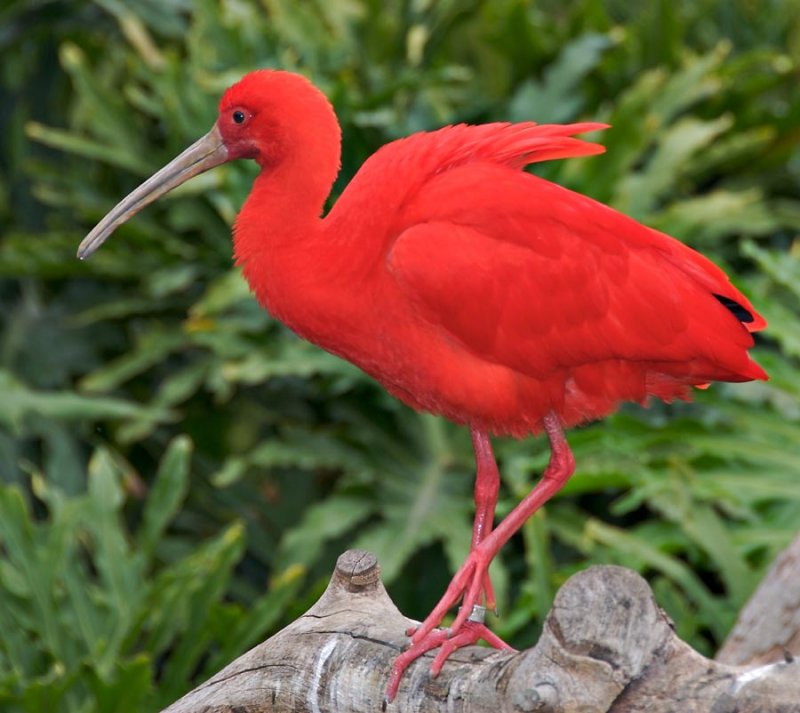
Eudocimus ruber
SUBFAMILY
Threskiornithinae
TAXONOMY
Scolopax ruber Linnaeus, 1758, Bahamas. Monotypic.
OTHER COMMON NAMES
French: Ibis rouge; German: Scharlachsichler; Spanish: Corocoro
Rojo.
PHYSICAL CHARACTERISTICS
24 in (60 cm); 2 lb (900 g). Scarlet plumage and black recurved
bill; non-breeding adults have pink or reddish bills.
DISTRIBUTION
Coastal Brazil to north Venezuela, Colombia, and eastern
Ecuador.
HABITAT
Mangrove swamps, lagoons, estuaries, wetlands, and mudflats.
BEHAVIOR
Often gather in large flocks, feeding during the day and roosting
in trees at night in large numbers. Has a plaintive, highpitched
call.
FEEDING ECOLOGY AND DIET
Hunts fish, frogs, newts, insects, crabs, and other invertebrates.
Forages in both saltwater and freshwater ecosystems.
REPRODUCTIVE BIOLOGY
Pair formation takes place in the small nest territory which is
defended by both partners. Nest material is brought mainly by
the male, and is used for building by the female. Clutch size is
usually two eggs. The young hatch after 21–23 days, are
tended by both parents, and are fledged at 35–42 days.
CONSERVATION STATUS
Not threatened.
SIGNIFICANCE TO HUMANS
None known.
Other popular Animals
Photo Gallery of - Scarlet ibis




 Animalia Life
Animalia Life